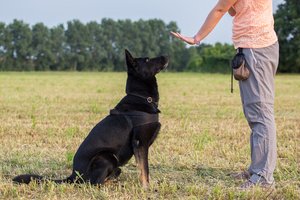Dogs are an amazing addition to our lives, but sometimes there are situations where you need to retrieve a dog off their leash. Maybe they got out of the yard or got lost while on a walk. There are many ways to end up in this situation, but don’t worry! Here’s everything you need to know to bring back a dog off its leash.
What should you do if your dog gets off leash?

If your dog gets off leash, it’s important to stay calm. If you are able to walk toward them in a relaxed manner, they may return on their own. You can also use a treat or toy to entice them back toward you. If this does not work, consider practicing recall with your dog in a secure area before taking them out for walks next time.
If your pet is still running away from you, try turning back so that he or she has a clear path back home. You might even want to run the opposite direction and encourage them with an excited voice and an extended arm pointing them in the right direction.
Here are several additional tricks that could encourage your dog to return to you if they continue to run away:
- Use a treat jar with a distinct opening sound so your pup will recognize it, even from far away.
- Sit down on the ground and pretend to cry. Dogs will often return to comfort their owner and see what is wrong.
- Ask your dog if they want to go do an activity they like and use a word they recognize, such as “Want to go for a WALK?” or “Let’s go to the PARK?!”
- Use their leash as a visual trigger to encourage them to run back to you to go for a walk.
- Open your car door and ask them if they’d like to go for a ride.

Make sure to avoid these knee-jerk responses:
- Do not chase the dog. They will think you are playing with them and will run even further away from you.
- Do not yell at them or make any sudden movements, as this could cause the dog to become afraid of you and run around even more than before.
Prevention Methods
The best way to prevent your dog from getting lost is to make sure they’re leashed at all times. If you have a large yard, consider putting up an invisible fence so that your pet stays within their designated area and doesn’t wander off or escape.
It’s also important for owners to register with the city or town where they live so that officials know who owns pets in case there’s ever an emergency situation.

Microchipping is also a great option for keeping track of your pet. Microchips are implantable devices that contain information about the owner and the location of where the animal was last seen. They are inserted under their skin by veterinarians, local shelters and rescue groups as well as other entities who help find missing pets. The microchip itself lasts for 10 years, but some companies offer lifetime registration services so that if yours gets lost again in the future, there’s no need for another procedure-just call them up!
You should make sure to always have a collar and tags on your pet whenever they go outside if they’re not microchipped. It helps identify them when someone finds them running around off leash because it lets folks know right away who owns them even before asking any questions. This way, if anything happens while they’re gone, like getting hit by a car or picked up by animal control officers while roaming free without permission from their owners, it’ll still be easy to get them back. Collars should fit snugly around their necks to prevent injury while wearing them.
Conclusion
As we’ve seen, dogs can get disconnected from their leash and away from their owners in an instant. The key is to be prepared with a plan for every scenario-even if you think it won’t happen to you! And remember, solutions are often easier than they seem at first glance. If you take these tips into account when training your dog, it will be much easier for everyone involved when trouble arises.


